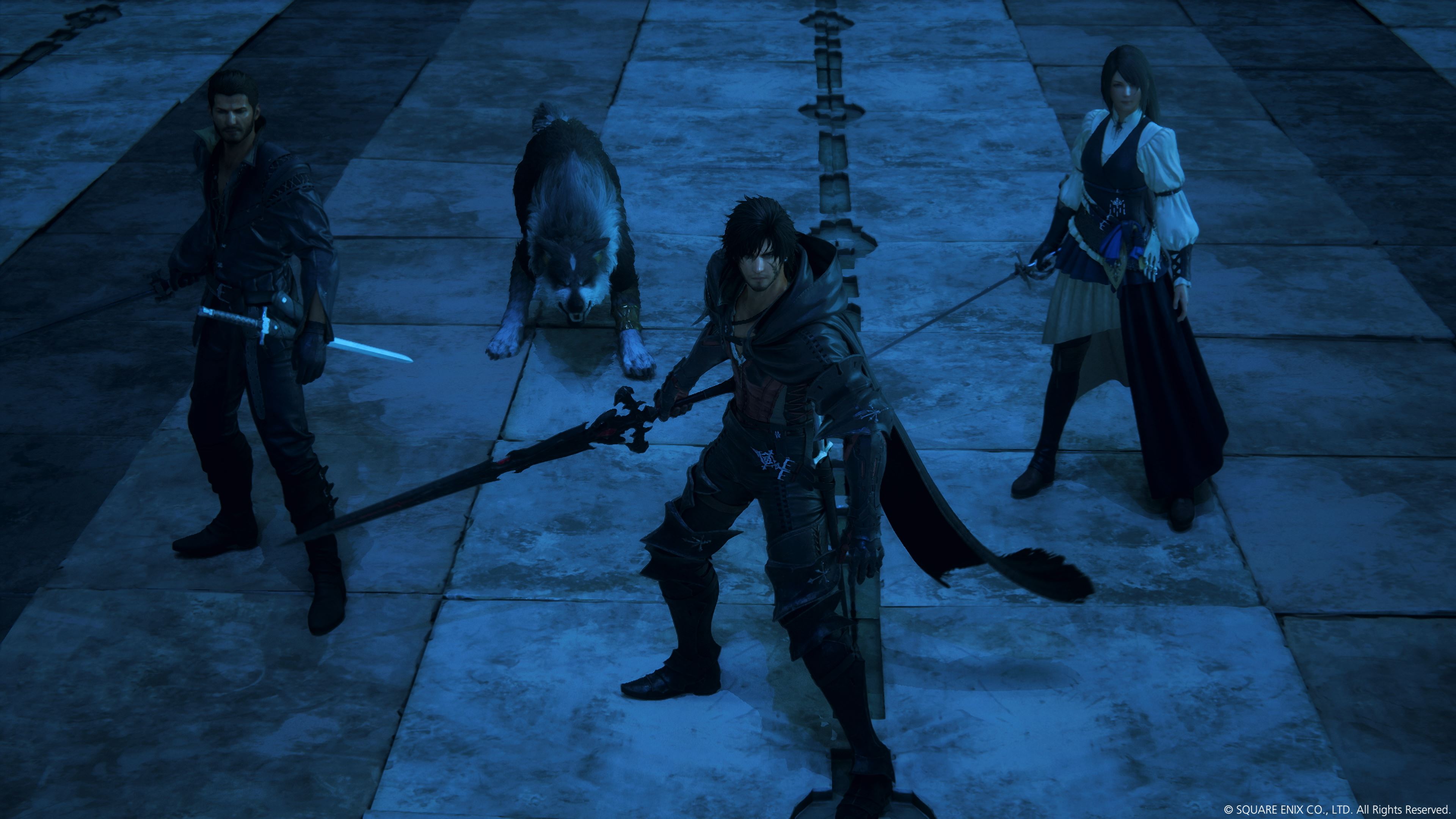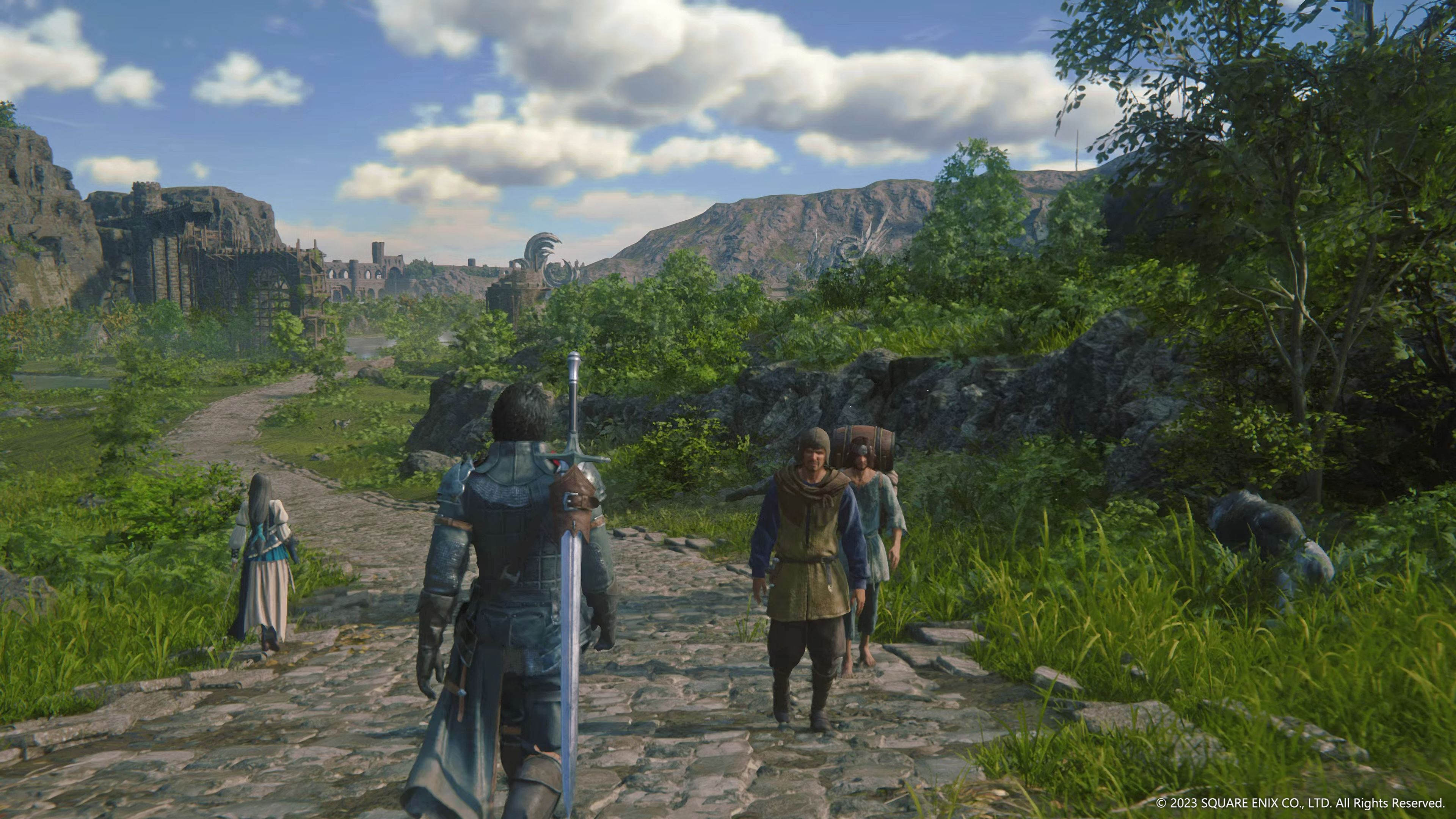Tom's Guide Verdict
Final Fantasy XVI reinvigorates the long-running franchise thanks to its grimdark tone and engaging real-time combat. This is exactly the refresh the series needed.
Pros
- +
Dark, gritty narrative
- +
Engaging real-time combat
- +
Incredible graphics
- +
High customization
Cons
- -
Shallow RPG mechanics
- -
Linear dungeons
Why you can trust Tom's Guide
Platforms: PC, PS5 (reviewed)
Price: $70
Release Date: June 22, 2023
Genre: Japanese role playing game
The Final Fantasy series has a reputation for reinventing itself with each new installment. Final Fantasy XVI follows that tradition by being the first to earn an M rating and to fully embrace real-time combat. While its grimdark tone and diminished RPG mechanics mark a radical departure, this game contains series staples like over-the-top magic spells, malevolent gods — and chocobos. Despite the darker veneer, this is still very much a Final Fantasy game.
Final Fantasy XVI isn’t your father’s Final Fantasy. Heck, it’s not even your Final Fantasy. But the changes introduced make the franchise feel more relevant than it has in years. I know some have decried the action-focused gameplay and mature tone, but as a long-time fan of the series, this entry ticks almost all of the right boxes for me. While I’m not enamored with everything, the characters, lore and graphics help me overlook some of the less-than-great aspects.
Final Fantasy XVI might not be perfect but it’s the best installment in years. I’ll explain why in my full review.
Final Fantasy XVI review: Story
Final Fantasy XVI returns the series to a medieval setting — something we haven’t fully seen since Final Fantasy IX. But instead of taking inspiration from Dungeons & Dragons or The Lord of the Rings, this installment is effectively Final Fantasy’s take on Game of Thrones. And like HBO’s popular series, FFXVI goes all in with gory violence and foul language. Be prepared for lots of bloodshed and cursing.

You play as Clive Rosfield, son of the Duke of Rosaria — one of the kingdoms of Valisthea where the game takes place. Things start well enough for Clive as he trains to become the Shield of the Grand Duchy tasked with defending his younger brother, Joshua, the Dominant of Fire. As you’d expect, things don’t remain tranquil for very long. Clive’s house suffers a gruesome end and he’s then forced to become a Bearer — who are little more than slaves.
I won’t delve deeper into the story, but suffice it to say that it’s filled with plenty of twists and turns to keep you engaged. It’s entertaining seeing all the houses in Valisthea vying for power even as an enigmatic force slowly turns the world into a barren wasteland. But as the years pass on in the game, Clive remains steadfast in his goal to avenge his family and to save whatever’s left of the land.
Despite the dark tone, you’re always reminded this is still a Final Fantasy game. There are giant skyscraper-sized magical crystals, equally enormous god-like beings called Eikons and all sorts of colorful spells used in battles. Seeing a cutscene of a kaiju-sized Odin charging his horse through a sea of comparatively ant-sized human armies is about as Final Fantasy as you can get — only with more blood and guts.
Final Fantasy XVI review: Combat
Where recent entries like Final Fantasy XV and Final Fantasy VII Remake dabbled with real-time combat mechanics, this 16th installment goes all in. This aspect will no doubt upset those who yearn for the return of turn-based combat. While I sympathize with that sentiment, the tight and precise battle mechanics are extremely satisfying.

There are dedicated buttons for attacking, casting magic, jumping and dodging. There’s also another button that helps you close the gap between far-off enemies. Holding one of the right shoulder buttons allows you to use more powerful magic spells. You’re free to perform most actions at any time. With the exception of big magic attacks, there are almost no cool-down periods — allowing you to continue pressing the attack.
If you’re not so great at action games or simply want easier combat encounters, you can equip items called Time Accessories. With these, you can unleash complex combos with one button, slow down time to dodge avoidable attacks and more. But if you prefer a hands-on approach to combos, you don’t have to equip these items. I like that players have both options so they can maximize their enjoyment with their preferred combat style.

Final Fantasy XVI has no shortage of epic boss battles, even during the early hours. While tough, you can stun these foes by depleting the Will gauge located underneath their health bar. Once you do, you’ll have a temporary window to attack without fear of retaliation. Breaking a boss’ will is very satisfying and it’s fun trying to figure out which attacks drain the Will gauge the fastest.

You can only control Clive but that doesn’t mean you’re always alone. Various allies join you throughout the story — not least of which is a trusty hound named Torgal. While it would have been fun to directly control my partners in combat, they do a decent job of helping out, especially when there are numerous foes on the battlefield. Just don’t expect them to have a significant impact on a battle’s outcome.
Final Fantasy XVI review: RPG mechanics
Final Fantasy XVI is technically an RPG since you gain experience points and find upgradeable equipment to boost your overall stats. Unfortunately, the RPG mechanics are shallow, not only compared to past entries, but to other RPGs. As with real-time combat, this is a gameplay philosophy that will irk many long-time players.
Defeating enemies and completing quests earns you experience points you can then use to unlock or strengthen skills and abilities from the skill tree. Upgrading abilities and using new ones give you a noticeable advantage in battles, which ultimately makes them more fun. This is especially true as you unlock more Eikonic (magic) abilities throughout the game.

You’ll find crafting materials throughout the environments or gain them by defeating enemies and completing quests. You can then use these materials to craft new swords, armor and accessories. Crafting is as simple as going to a blacksmith and having them forge items for you. However, don’t expect to spend much time deciding which items to forge as you can only truly make new items during certain portions of the story. So long as you visit a blacksmith after every major boss battle, you’ll always have what you need to craft the next sword or armor piece. While I don’t mind this level of simplicity, it won’t be for everyone.
Speaking about shallow aspects, level design is my biggest gripe with Final Fantasy XVI. Like the maligned Final Fantasy XIII, dungeons consist of large enemy-filled rooms connected by narrow passages. There are barely any divergent paths to explore, nor are there multi-tiered levels. You just go from battle room to battle room until you encounter the dungeon’s boss. Sure, this is similar to how action games like Devil May Cry function, but that series still offers more space for exploration. The level design in Final Fantasy XVI is incredibly unsatisfying.
Final Fantasy XVI review: Side quests
Outside of the main quest, there are numerous side quests to partake in. These mostly consist of townsfolk sending you on missions to either slay monsters, gather materials or both. Side quests mostly serve as a means to level up and gain materials for upgrading equipment. Most of them are pretty boring but there are a few (particularly in the latter half of the game) that have engaging narratives.

You can also hunt particularly tough boss-like monsters located across the realm. As with regular side quests, these beast hunts are a good way to gain more levels and loot. The encounters have ranks, letting you know how difficult it will be. C-grade monsters are easy enough, but anything with an A or S rating will challenge you. I always looked forward to unlocking new beast hunts as the game progressed.
Final Fantasy XVI review: Visuals and sound
Final Fantasy is synonymous with gorgeous graphics and the sixteenth installment is no exception. Final Fantasy XVI is a feast for the eyes. Everything from dark claustrophobic dungeons to sprawling grass-covered plains looks phenomenal. The exquisitely-detailed main cast of characters also receives similar attention to detail.

While the game looks great, its performance isn’t stellar. Quality mode locks the frame rate to 30 frames per second with a resolution of 1440p (which upscales to 4K). Conversely, Performance mode lowers the resolution to 1080p (720p in some cases) with a variable frame rate between 40 to 60 fps. You’ll mostly experience lower frame rates when exploring the world and a locked 60fps during combat.
60 fps for combat is nice and all but that doesn’t cancel out the muddy textures you get as a result of playing in Performance mode. Because of that, I stuck with Quality mode. 30 fps isn’t my favorite, but it doesn’t take long to acclimate to it. Plus, I’d rather have locked 30fps than a variable frame rate my eyes can’t get adjusted to.
Final Fantasy XVI’s music is technically proficient though I can’t say it’s memorable. It’s clear the glory days of composer Nobuo Uematsu’s legendary music scores have long since passed. Still, the score does its job of keeping you in the moment — even if it isn’t very memorable.
Final Fantasy XVI review: Verdict
Final Fantasy XVI differs from its predecessors but retains the core elements that give the series its identity. Yes, this is a dark game with fast-paced combat. However, it’s filled with the same sense of wonder and hope fans have come to expect.
Despite its flaws, Final Fantasy XVI is largely a triumphant return for the core series; one which will no doubt draw in new audiences. It’s unclear whether Square-Enix will continue releasing more entries with similar combat and tone. If so, then I suppose the Final Fantasy VII Remake series will give RPG purists more of what they desire. But as a singular work, Final Fantasy XVI is a game I recommend to all PS5 owners.

Tony is a computing writer at Tom’s Guide covering laptops, tablets, Windows, and iOS. During his off-hours, Tony enjoys reading comic books, playing video games, reading speculative fiction novels, and spending too much time on X/Twitter. His non-nerdy pursuits involve attending Hard Rock/Heavy Metal concerts and going to NYC bars with friends and colleagues. His work has appeared in publications such as Laptop Mag, PC Mag, and various independent gaming sites.

